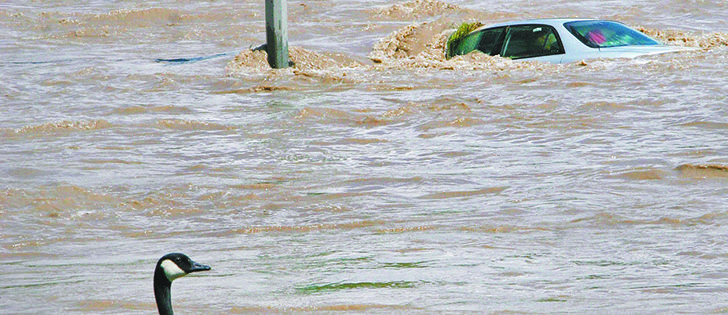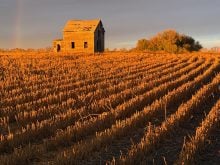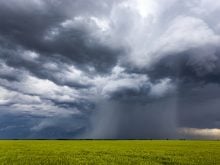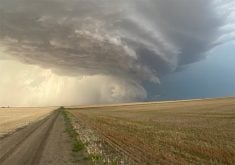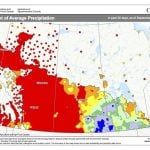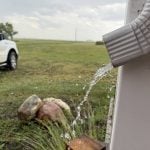BRAGG CREEK, Alta. — Bev MacDonald knew the situation was becoming dangerous on the morning of June 20 as she watched the school bus cross a bridge leaving Bragg Creek.
Her son was on the bus, and the water was rising hard and fast.
Parents did not know if the bridge would hold and no one was sure what to do as the flash flood started to wash away traffic signs in the hamlet west of Calgary.
MacDonald’s family has since returned home from an evacuation centre, and she considers herself luckier than most because some houses are condemned and businesses have been lost. Her house sustained some damage and the garage is full of silt after the Elbow River surged across the community.
Read Also
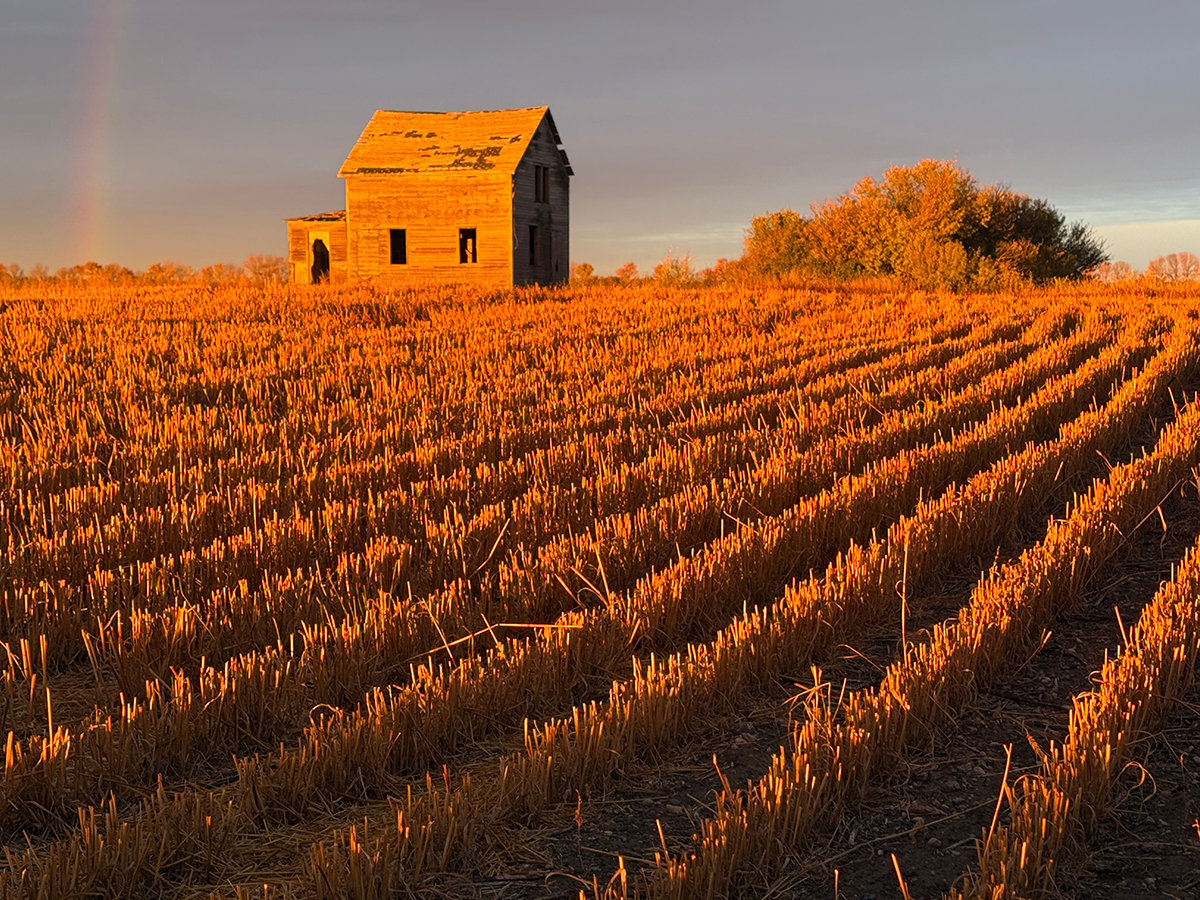
Forecast leans toward cooling trend
July saw below average temperatures, August came in with near to slightly above average temperatures and September built on this warming trend with well above average temperatures for the month.
“A bit of irony is that my husband is a renovator and 18 inches of mud covers his tools,” she said after a meeting held in Bragg Creek July 25.
People across southern Alberta have similar stories about the event, which placed 29 communities under a state of emergency in the worst flood disaster in recent memory.
Now, as the clean-up and reconstruction continues, public meetings are hearing concerns and providing answers about how much help government can provide.
The province announced $1 billion of flood recovery and reconstruction money June 24, but damage estimates have climbed to more than $3 billion with about $1.2 billion of that being insurable losses.
As of July 9, nearly 36,000 emergency payments in the form of debit cards worth $62 million had been made to displaced people.
Rocky View County, which surrounds Calgary on three sides, sustained $1 million worth of damage.
Jorie McKenzie of the county’s engineering department said priorities are being set for rebuilding riparian areas, roads and bridges. He hopes most work will be completed by the end of November.
“We have done a reconnaissance and we’ve created a list of projects that we think we are going to have,” McKenzie said.
“The damage on private property was much greater than damage on public infrastructure.”
The province has announced aid programs with money funneled through the Alberta Financial Services Corp.
Homeowners can get help to repair or rebuild primary residences and other uninsurable losses.
Help is also available to communities, non-profit groups, small businesses and farmers.
The Alberta flood recovery loan guarantee program is offering small business loans up to $1 million to help recover, rebuild and re-establish operations. The province is providing loan guarantees and will cover interest charges through a rebate program.
As for the future, the province is relying on a panel of experts to consider collective mitigation throughout southern Alberta. It will consult with international experts as well as local residents.
The province does not plan to find ways to stop floods because it considers them an act of nature. However, it wants improved infrastructure for better protection when the next flood happens.
“The magnitude of this event was unprecedented,” said Jim Cornish, director of recovery operations with Alberta Emergency Management.
There is confusion as to how much the province is prepared to replace for those who need to repair, rebuild or relocate.
The plan is to restore basic essentials to “functional condition,” but those experiencing losses have the option to top it up and restore their lost property to a higher standard.
If you had solid granite countertops in your kitchen, we will provide assistance to replace those countertops with standard laminate counterparts,” Cornish said.
“It is not an insurance program.”
The province is hoping to get 90 percent of eligible funds back from the federal government so that the disaster risk is spread among all Canadian taxpayers.
Residents who are waiting for evaluators to assess their losses are also advised to contact their municipal councillors or MLAs to explain their individual situations.
For more information, call 310-4455 toll-free in Alberta or visit albertaca/2013DisasterRecoveryPrograms.cfm and www.afsc.ca.




